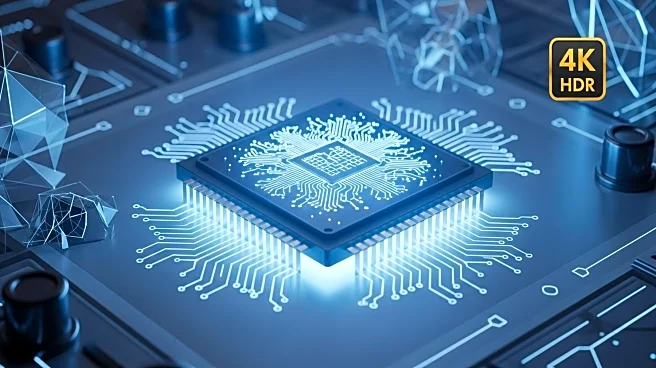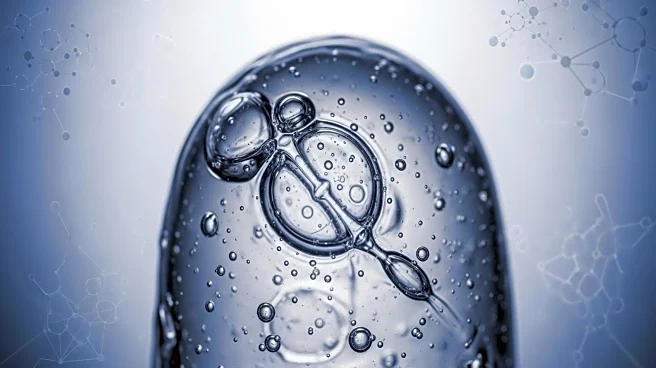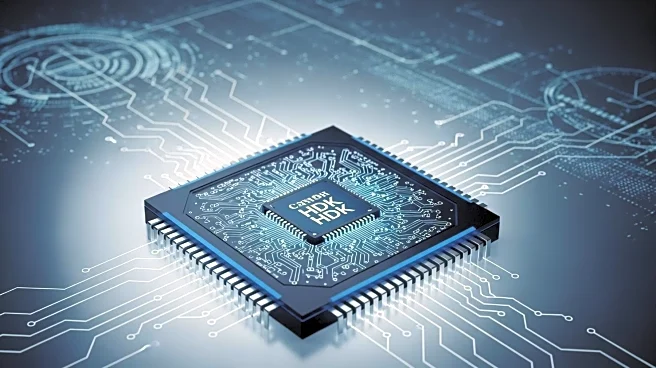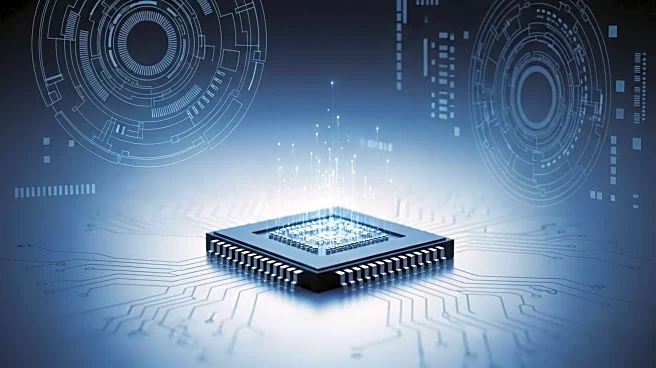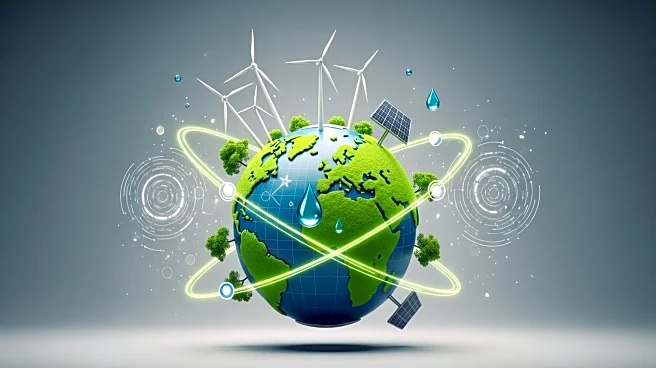What is the story about?
What's Happening?
Johns Hopkins University scientists have made a significant advancement in microchip technology by developing a new process called chemical liquid deposition (CLD). This method allows for the creation of microchips that are smaller, faster, and more affordable. The research, published in the journal Nature Chemical Engineering, involves using metal-organic materials that interact with high-powered radiation to create circuits invisible to the naked eye. This breakthrough addresses a major challenge in the electronics industry, which is the need for smaller features in microchip production. The process utilizes beyond extreme ultraviolet radiation (B-EUV) to imprint circuit patterns on silicon wafers with nanometer precision. The team, led by Michael Tsapatsis, collaborated with several international institutions to develop this innovative approach.
Why It's Important?
This development has the potential to revolutionize the electronics manufacturing industry by enabling the production of more efficient and cost-effective microchips. As microchips are integral to a wide range of modern electronics, including smartphones, cars, and appliances, this advancement could lead to significant improvements in these technologies. The ability to produce smaller and faster chips could enhance the performance of electronic devices, making them more powerful and energy-efficient. Additionally, the economic implications are substantial, as the new process could reduce manufacturing costs and increase competitiveness in the global market. Companies that adopt this technology may gain a significant advantage in the rapidly evolving electronics sector.
What's Next?
The researchers are continuing to experiment with different combinations of metals and organic materials to optimize the CLD process for B-EUV radiation. This ongoing research aims to refine the technology further and prepare it for industrial application within the next decade. As the process becomes more widely adopted, it is expected to influence the strategies of major electronics manufacturers and potentially lead to new innovations in microchip design. The collaboration between academic institutions and industry partners will be crucial in transitioning this breakthrough from the laboratory to commercial production.
Beyond the Headlines
The ethical and environmental implications of this technological advancement are also noteworthy. The ability to produce smaller and more efficient microchips could lead to reduced electronic waste and lower energy consumption, contributing to more sustainable manufacturing practices. However, the rapid pace of technological change may also raise concerns about job displacement in traditional manufacturing roles. Balancing innovation with social responsibility will be an important consideration as this technology progresses.
AI Generated Content
Do you find this article useful?
